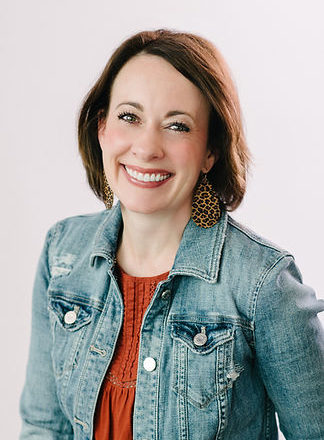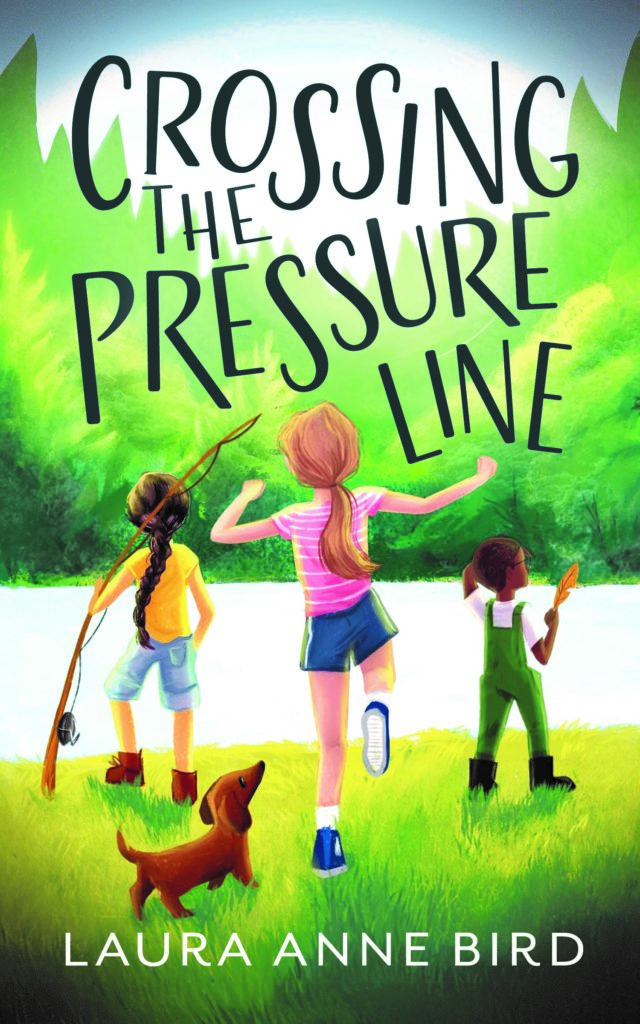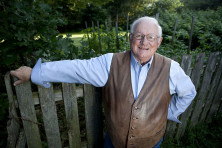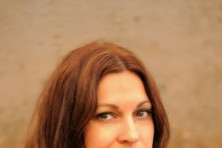Questions & Authors: Laura Bird
- Share
- Tweet
- Pin
- Share

On March 19, middle-grade author Laura Bird will lead a program for kids at Yardstick Books in Algoma centered around her book, Crossing the Pressure Line.
The story follows 12-year-old Clare Burch, who has just lost the person she loves most in the world: her grandfather. Dealing with her feelings of grief and guilt over his death, she travels from her home in Chicago to the Northwoods of Wisconsin to her grandfather’s cabin, where she spends her summer meeting new people and learning more about herself in the process.
Bird grew up in Wauwatosa, Wisconsin; graduated from the University of Notre Dame; and spent more than 20 years writing for nonprofit organizations before switching to fiction. She’s currently at work on her second novel, which will be a companion to Crossing the Pressure Line.

During the Yardstick Books program, Bird will lead activities and conversations related to her book, and attendees will receive a free book and snack.
In advance of her program, I sent a few questions about writing middle-grade books that discuss tough topics.
Grace Johnson (GJ): Your media kit mentions that you developed the idea for Crossing the Pressure Line over a few years. Was there something specific that sparked the idea?
Laura Bird (LB): About 15 years ago, an image flew into my head from out of nowhere: the image was of a tween girl. She was wearing something intriguing, and she was pushing open the door of a very specific place. (No spoilers here!)
I immediately wondered, “Who is this brave little person? What in her life has brought her to this exact moment in time?” Ultimately, the girl became my main character of Clare Burch, and the scene became the closing moment of my book.
I developed the details of Clare’s story over many years while raising my three kids, who are now teenagers. All the hours I spent making their lunches and folding laundry, I thought about Clare. Invariably, I would end up jotting down frantic notes in my phone or on any scrap of paper I could find.
Clare’s story was sparked by my love of the outdoors, and by watching my husband teach our children how to fish. Plain and simple, it’s a love letter to Wisconsin.
GJ: Is it hard to put yourself in the headspace of a 12-year-old like your main character, Clare?
LB: It’s not difficult for me to channel my 12-year-old self because I acutely remember the push and pull of that age – and I’ve also watched my own kids go through it. You want to feel independent, but you still want the comfort and reassurance of your family. You want to stand out from the crowd, but you still want to fit in. It’s like playing tug-of-war with yourself.
On top of these major social and emotional challenges, many tweens struggle to find confidence in their own bodies, which was definitely a challenge for me, too. I wanted Clare to model a different way of being. Even though she’s not the fastest or the strongest, she develops a powerful mind-body connection and sense of agency. Together, these things allow her to become a mighty force.
I think tweens need to be reminded that they are capable of exactly this. I certainly would’ve benefited from hearing this message at age 12.
GJ: This book talks about a pretty serious topic – the loss of a loved one – and the guilt associated with that loss. How do you approach writing about a topic like this for young readers?
LB: Clare’s loss of her grandfather is devastating, but I think her grief mirrors the grief of many children – and grown-ups – after being stuck in a pandemic for two years. I wanted Clare to undergo significant growth and find a new sense of hope and purpose because every single one of us is called to do that during our lives.
I’m a big believer in being open and honest about our vulnerabilities and big feelings. No one benefits when we sweep them under the rug. I wanted to show kids that it’s totally acceptable to feel like a wad of Play-Doh, being smooshed in one direction and then the other. It’s a huge part of the human experience.
GJ: What are the most challenging and rewarding parts of writing for middle-grade readers?
LB: The biggest challenge for me in writing middle-grade fiction is to consistently avoid “teaching” or “preaching” from the adult perspective. My editor, with whom I’ve worked closely, has shown me how easy it is to have the parent (or teacher or grandmother) start lecturing the main character. That’s a big no-no for this genre. The discoveries and realizations need to come from the kids themselves. They need to actively drive their own learning and self-actualization.
The most rewarding part of writing middle-grade fiction is to hear that my readers feel seen and understood. I wanted my story to mirror their lives, which is why I wove in diverse characters, nontraditional families and lots of messy, imperfect moments. I’ve been there; I’m living it; and I get it.
GJ: What are you reading now?
LB: I’m a shameless book polygamist, so I’m always reading a handful of books at the same time, usually across a number of genres.
Currently, I’m reading the young-adult novel Firekeeper’s Daughter by Angeline Boulley, Good Enough: 40ish Devotionals for a Life of Imperfection by Kate Bowler and Jessie Richie, and Chatter: The Voice in Our Head, Why It Matters, and How to Harness It by Ethan Kross.
Have I mentioned that I often have upwards of 20 books checked out from the library at once? I may or may not have a problem.





